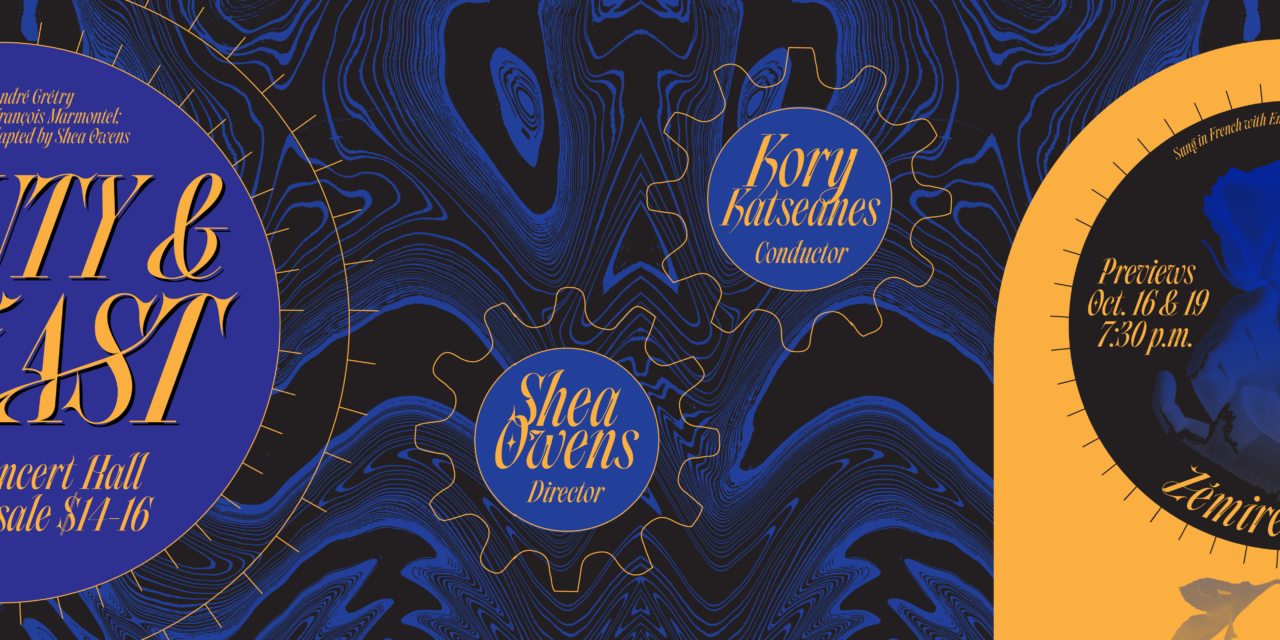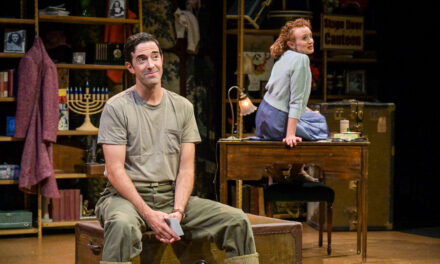PROVO — The tale of “Beauty and the Beast” has captivated people for centuries. While modern audiences know it best through literature, television, stage, and film adaptations, the opera world has its own take on the enchanting fairy tale: Zémire et Azor. The School of Music and Department of Theater and Media Arts at Brigham Young University have teamed up to present a musically exquisite production of this adaptation.

Show closes October 23, 2021.
Although newcomers often find opera intimidating, Zémire et Azor is an approachable production. Yes, the score (composed by André-Ernest-Modeste Grétry) is sung in French, but a real-time English translation is displayed at the sides of the stage. Moreover, the dialogue—which conveys the majority of the plot—is in English. Director Shea Owens has also revised and modernized the script (originally written by Jean François Marmontel). These aids and the familiar story ensure that no knowledge of opera is needed to understand Zémire et Azor.
Grétry’s score is not familiar to the general public, but it is still a pleasure to listen to. Musical coach Barbara Allen crafted every note to showcase the singers’ strengths and make the artistry of the music obvious. Conductor Kory Katseanes leads the orchestra with expert precision, and the string-heavy instrumental music is well suited for the romantic story.
Where the production falters is in the stagecraft. Most notably, the beast character (Azor) is portrayed by a 10-foot-tall puppet, with an actor (Matthew Paez) delivering dialogue and singing a few feet away. This puppet, designed by Nat Reed, is an eyesore, with a frog-like head, leg, and hands; a cockroach body with spines on the top; and grasshopper or frog legs (and a unicycle wheel for one foot for some reason). Four puppeteers controlled the puppet and were excellent at making it appear to breathe and move (sometimes even bobbing slightly to the music). But when Paez would sing, the hideous creature next to him was a huge, persistent distraction. I sometimes had to hold my hand up to block my view of the puppet so that I could enjoy Paez’s performance unencumbered.
And what a performance it was! Paez has a rich tenor voice that effortlessly fills the de Jong Concert Hall’s cavernous space. His vocal control is perfect, and Paez can deliver the emotion needed to make his character the most real in the show. It is a tragedy, though, that audiences will remember the gigantic puppet he stood near during most of the night, and not his flawless singing.
The puppet also caused problems for Savannah Porter in the role of Zémire. The character is supposed to fall in love with Azor, and Porter did her best to engage with the puppet. The problem is that the Azor puppet’s head could only move its jaw, and its emotional expression was limited to and one eye that would turn red when he was angry and blue when he was not. This is not conducive to creating romantic scenes, and Porter was forced to be the sole source of feeling in the title characters’ scenes. Vocally, Porter is a powerful virtuoso who elevates the score, and her performance of the warbler song in Act III was a triumph.
Stagecraft problems also occurred because of Owens’s compulsion to use as much of the large de Jong stage as possible in every scene. Actors dashed around the stage needlessly, and intimate scenes were sometimes blocked so that characters were too far apart to make a meaningful connection. (This was most apparent in the father-daughter scenes.) Where Owens succeeded most directorially was staging group numbers, especially the quartet in Act III that serves as the musical climax of the opera.
Set designer Elisabeth Goulding created a functional, pleasant stage with a single set that could serve as both Azor’s home and Zémire’s home. The faux stone façade was tasteful and lent an Old World charm to the show. Costume designs (by Kim Wright) were more chaotic. Zémire and Azor were dressed in a late Victorian steampunk fashion (and the puppet had portions that looked like metal plating), dominated by a copper and brown color palette. But Zémire’s father (Sander, played by Spencer Brown) and sisters (played by Rebekah Nelson and Ellie Warner) were dressed as early nineteenth century members of the bourgeoisie, but their servant (Ali, played by Jacob Stucki) was dressed in eighteenth century finery (complete with knee breeches and a long brocade coat decorated with gold embellishments). The clash of eras and styles was one of the most confusing aspects of the show.
As a musical experience, Zémire et Azor is a success. As a visual storytelling experience, it leaves much to desire. Still, Zémire et Azor is an excellent choice to produce during a pandemic. The opera only has six characters, and its familiar story is accessible to audiences. I admire the director and designers for taking risks to produce a lesser known opera and pushing the boundaries of a 250-year-old work. Even if some of those risks did not succeed, it is refreshing to see an unfamiliar title and new ideas on the Utah stage.





